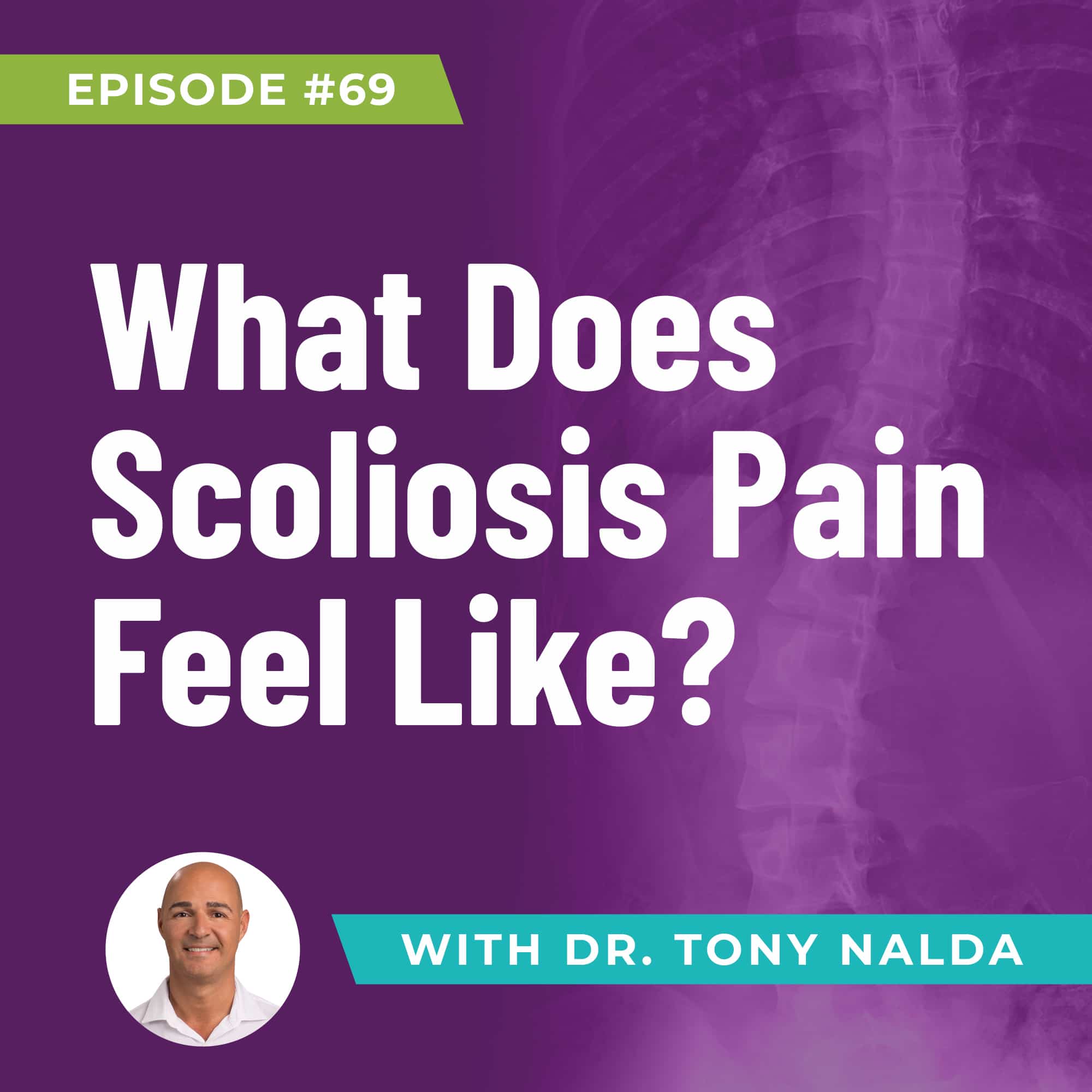Episode 69: What Does Scoliosis Pain Feel Like?
Today, we talk about the nature of scoliosis pain to gain a better understanding of what individuals living with this condition may feel.
Scoliosis pain is a multi-faceted experience that differs from person to person. Understanding the nuances of scoliosis pain can help individuals better manage and communicate their symptoms to be able to come up with effective treatment strategies.
Scoliosis pain can occur in both adolescents and adults, with a higher incidence in lumbar curves. Progression of scoliosis over time, influenced by gravity and compression of spinal tissues, often leads to pain onset. It’s a type of pain that typically manifests in the mid to late 30s or 40s and gradually worsens, but individual experiences may vary.
Differentiating between Adolescent and Adult Scoliosis Pain
Scoliosis pain is less common in adolescents due to the absence of compressive forces caused by growth. You can have a child with a 100-degree curve yet have no pain at all. That’s because their spine is growing and they’re elongating so there’s no compression. But just because it's not causing pain doesn't necessarily mean it's not an important problem to deal with. Adults with scoliosis on the other hand are more likely to experience pain as progression occurs gradually over time, leading to compression and nerve-related discomfort.
How to Treat Scoliosis Pain?
- Evaluate the condition by assessing the progression of scoliosis by comparing past and present X-rays to determine the extent of the curve’s development.
- Develop a customized treatment plan that focuses on reducing scoliosis progression and addressing the underlying cause of pain.
- Seek specialized chiropractic care that targets scoliosis, including specific adjustments and therapies designed to alleviate pain and reduce the curve.
- Engage in rehabilitative exercises tailored to scoliosis management, which can help improve spinal alignment, muscle imbalances, and overall function.
- Utilize corrective scoliosis bracing (if necessary) to support the spine and promote proper alignment, particularly during periods of growth.
- Time and Commitment
- Seek the expertise of professionals specializing in scoliosis management, who can provide tailored guidance and support throughout the treatment journey.
With any type of pain, understanding the underlying cause of the pain is a crucial step towards effectively managing the pain, reduce progression, and enhance the over well-being.
For more on this, check out Dr. Tony Nalda’s podcast.
Musicbed SyncID: MB01W9FGJYN2I8V
Podcast: Play in new window | Download
Subscribe: RSS
Dr. Tony Nalda
DOCTOR OF CHIROPRACTIC
After receiving an undergraduate degree in psychology and his Doctorate of Chiropractic from Life University, Dr. Nalda settled in Celebration, Florida and proceeded to build one of Central Florida’s most successful chiropractic clinics.
His experience with patients suffering from scoliosis, and the confusion and frustration they faced, led him to seek a specialty in scoliosis care. In 2006 he completed his Intensive Care Certification from CLEAR Institute, a leading scoliosis educational and certification center.
About Dr. Tony Nalda
 Ready to explore scoliosis treatment? Contact Us Now
Ready to explore scoliosis treatment? Contact Us Now








